You’re probably leaving money on the table every month through wasted energy, but your Google Home can change that with just a few simple voice commands. While most people use their smart speakers for music and weather updates, they’re missing out on powerful energy-saving features that could slash their utility bills. These seven specific commands will transform how you manage your home’s energy consumption, and some of them might surprise you with their effectiveness.
Smart Lighting Control Commands for Maximum Efficiency
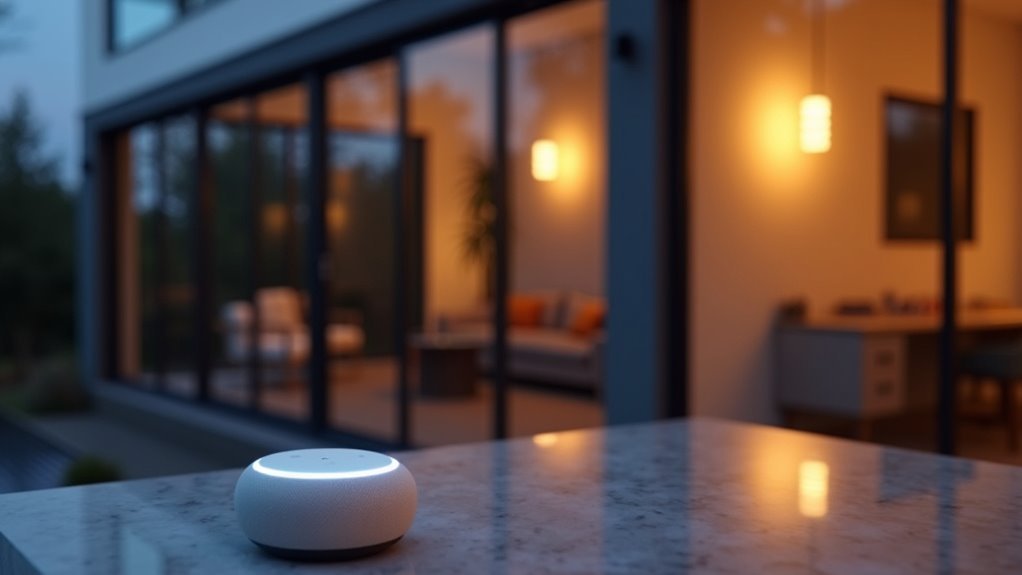
Since lighting accounts for roughly 10% of your home’s energy consumption, mastering Google Home’s smart lighting commands can deliver immediate savings on your electricity bill.
Start with basic voice controls like “Hey Google, turn off the lights” to eliminate unnecessary usage throughout your home. You can fine-tune energy consumption by adjusting brightness levels with commands such as “Hey Google, dim the living room lights by 50%” for ideal illumination during different activities.
Smart lighting systems become even more efficient when you create lighting schedules using phrases like “Hey Google, set the bedroom lights to turn on at sunset.”
Additionally, smart lighting scenes let you control multiple smart lights simultaneously with commands like “Hey Google, set the movie scene,” maximizing energy efficiency during specific activities.
Temperature Management Through Voice-Activated Thermostat Controls
You’ll find that voice-activated thermostat controls offer three powerful ways to cut your energy costs while maintaining comfort.
Basic commands let you adjust temperatures instantly, while smart scheduling automatically optimizes your heating and cooling based on your daily routines.
Zone control systems take this further by allowing you to heat or cool only the areas you’re actually using, maximizing efficiency throughout your home.
Basic Thermostat Voice Commands
Managing your home’s temperature becomes effortless when you use Google Home’s voice commands to control your smart thermostat. You can achieve precise temperature control by saying “Hey Google, set the thermostat to 72 degrees” for immediate adjustments.
For fine-tuning, use incremental commands like “Hey Google, increase the temperature by 2 degrees” to maintain ideal comfort without wasting energy.
Google Assistant learns your preferences over time, automatically enhancing your heating and cooling schedules for maximum energy savings.
You’ll find it convenient to check current conditions by asking “Hey Google, what’s the temperature outside?” This helps you make informed decisions about indoor climate control.
These basic voice commands eliminate manual thermostat adjustments while promoting efficient energy usage throughout your home.
Smart Scheduling Energy Optimization
While manual temperature adjustments work for immediate comfort, smart scheduling transforms your energy consumption by automating climate control based on your daily routines.
You can create sophisticated schedules through the Google Home app that coordinate with your smart thermostats to maximize energy efficiency.
Set up routines that automatically adjust temperatures when you’re sleeping or away from home. Voice commands like “Hey Google, activate energy saving mode” can trigger multiple temperature adjustments throughout your smart home devices simultaneously.
Your thermostat learns from these patterns, optimizing settings without constant manual input.
Advanced scheduling allows you to program specific temperatures for different times, ensuring you’re not heating or cooling an empty house while maintaining comfort when you’re present.
Zone Control Heat Management
When your home has multiple zones with separate heating controls, strategic voice commands let you target specific areas for maximum energy efficiency.
Zone control heat management through your smart thermostat enables precise temperature adjustments room by room. You can say “Hey Google, lower the temperature in the living room” to reduce energy consumption in unoccupied spaces while maintaining comfort where needed.
Voice commands like “Set the bedroom to 65 degrees” make it effortless to adjust settings without manual intervention.
Your smart thermostat learns preferences and automatically optimizes heating schedules, creating a comfortable environment while minimizing waste.
Studies show reducing temperatures by just one degree delivers approximately 3% annual energy savings, making strategic zone management incredibly effective for long-term efficiency.
Smart Appliance Scheduling and Timer Commands
Everyone can transform their daily energy habits by leveraging Google Home’s smart appliance scheduling and timer commands. You’ll reduce energy consumption during peak hours by programming devices to operate at specific times. Commands like “Hey Google, start my coffee maker at 7 AM” help optimize energy use while automating daily routines.
| Command Type | Example Voice Command |
|---|---|
| Scheduling | “Hey Google, start dishwasher at 10 PM” |
| Timer Control | “Hey Google, set a timer for washing machine for 45 minutes” |
| Device Management | “Hey Google, turn off living room lights” |
Smart plugs extend these capabilities to non-smart appliances, enabling remote control and scheduling. You can easily turn off devices with simple voice commands, minimizing unnecessary energy waste and reducing electricity bills effectively.
Energy Monitoring and Usage Tracking Voice Commands
You can track your home’s energy consumption in real-time by asking Google Home specific questions about your current usage patterns.
Voice commands let you quickly check upcoming bill due dates and identify which appliances might be wasting energy throughout your home.
These monitoring features help you spot trends and make immediate adjustments to reduce your monthly energy costs.
Real-Time Usage Tracking
Real-time energy monitoring transforms how homeowners understand their electricity consumption, and Google Assistant makes this data instantly accessible through simple voice commands.
You can track real-time energy consumption by asking, “Hey Google, how much energy is my dishwasher using?” to monitor specific appliances instantly. This immediate feedback helps you identify energy-hungry devices and adjust usage patterns for better energy efficiency.
Setting up energy usage alerts through voice commands guarantees you’re notified when consumption exceeds your predetermined limits.
Simply say, “OK Google, give me a summary of my energy usage” to review daily or weekly patterns. You can also activate energy-saving routines by commanding, “Hey Google, activate energy-saving mode,” which automatically adjusts multiple smart devices simultaneously to minimize waste.
Bill Inquiry Commands
How easily can you stay on top of your energy costs? With Google Home’s bill inquiry commands, you’ll never miss important payment deadlines or lose track of expenses.
Simply say “OK Google, when is my bill due?” to get instant payment reminders. You can also ask “OK Google, what’s my current energy rate?” to monitor pricing changes that affect your monthly costs.
These voice commands help you track energy usage patterns and identify spending trends. Many utility companies now integrate with Google Assistant, enabling you to ask “OK Google, give me energy-saving tips” for personalized advice.
You can even explore “OK Google, how can I participate in energy-saving incentives?” to discover demand response programs that reduce costs while supporting grid efficiency.
Energy Waste Detection
While traditional energy monitoring requires checking apps or utility websites, Google Assistant transforms your smart home into an active energy detective. You can track consumption patterns through voice commands and identify wasteful devices without lifting a finger.
Your Google Assistant provides powerful energy monitoring capabilities:
- Real-time device tracking – Ask “OK Google, how much energy is my smart plug using?” to monitor specific appliances and identify power-hungry culprits instantly.
- Personalized energy-saving tips – Say “Hey Google, what’re my energy-saving tips?” to receive tailored recommendations based on your usage patterns and smart home products.
- Automated waste reduction routines – Create voice-activated routines like “Hey Google, set away mode” to automatically eliminate standby power consumption when you’re not home.
Smart Plug Control for Standby Power Elimination
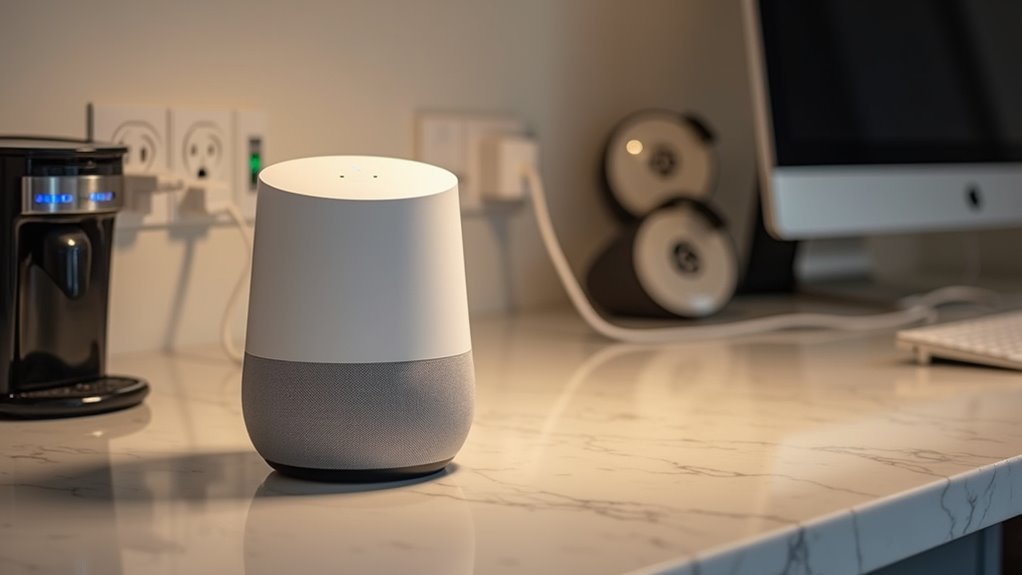
Although standby power might seem negligible, phantom loads from electronics can account for up to 10% of your home’s energy consumption.
Smart plugs offer an effective solution by allowing you to completely cut power to devices when they’re not needed. You can eliminate these phantom loads with simple voice commands like “Hey Google, turn off the living room plug” to disconnect TVs, gaming consoles, and chargers.
Smart plugs eliminate phantom loads instantly with voice commands, cutting power to TVs, gaming consoles, and chargers when not needed.
Many smart plugs include energy monitoring features that help you identify which appliances consume the most power.
Use scheduling commands such as “Hey Google, turn on the coffee maker at 7 AM” for automated energy management.
Create scenes to control multiple devices simultaneously—saying “Hey Google, goodnight” can turn off all smart plugs throughout your house instantly.
Automated Energy-Saving Routines and Scenes
Since manual control of individual devices becomes tedious over time, automated energy-saving routines transform your Google Home into a proactive energy management system.
These routines execute multiple voice commands simultaneously, creating extensive scenes that maximize efficiency without constant oversight.
Your automated energy-saving routines work best when programmed for these scenarios:
- Away from Home Scene – Use voice commands like “Hey Google, I’m leaving” to turn off lights, adjust thermostats to energy-efficient settings, and activate smart plugs that cut power to non-essential appliances.
- Bedtime Routine – Say “Hey Google, goodnight” to automatically turn off lights throughout your home, lower the thermostat, and power down entertainment devices.
- Dawn and Dusk Scheduling – Program automatic lighting adjustments that follow natural light patterns to reduce energy consumption year-round.
Utility Company Integration and Peak Hour Management Commands
Beyond automating your home’s energy routines, Google Home can connect directly with your utility company to optimize energy usage during peak demand periods.
Many utility companies now offer voice assistant skills that let you check bill due dates, monitor energy consumption, and receive energy saving tips through simple voice commands.
During peak hours, your Google Home can receive notifications from utility providers prompting you to reduce usage for potential savings.
You can participate in demand response programs by using voice commands to turn off appliances or adjust thermostat settings when requested.
This utility company integration enables real-time energy tracking, helping you make informed decisions about consumption habits.
Voice commands also streamline communication, allowing you to request energy advice or report outages effortlessly.
Frequently Asked Questions
What Are the Best Google Home Commands?
You’ll find the best Google Home commands control lighting, thermostats, and appliances efficiently. Use “turn off lights,” “set temperature,” and “goodnight” routines. Schedule devices, create entertainment scenes, and automate daily tasks for maximum convenience and functionality.
Do I Have to Say OK Google Every Time?
You don’t have to say “OK Google” every time if you enable Continued Conversations in settings. This lets you ask up to three follow-up questions consecutively without repeating the wake phrase.
What Is the Secret Mode on Google Assistant?
Secret Mode on Google Assistant lets you make private voice requests that aren’t saved to your account history. You’ll activate it by saying “Hey Google, turn on Secret Mode” for confidential queries.
Is Google Home Energy Efficient?
Google Home itself uses minimal energy, consuming only about 2 watts when idle. You’ll find it’s quite efficient, but its real value comes from helping you control other smart devices to reduce overall home energy consumption.

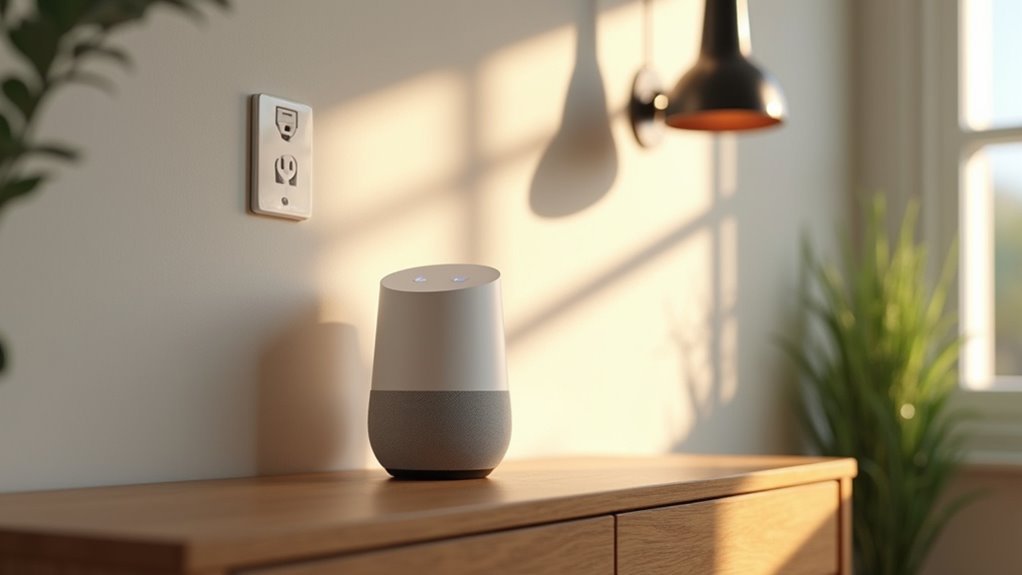

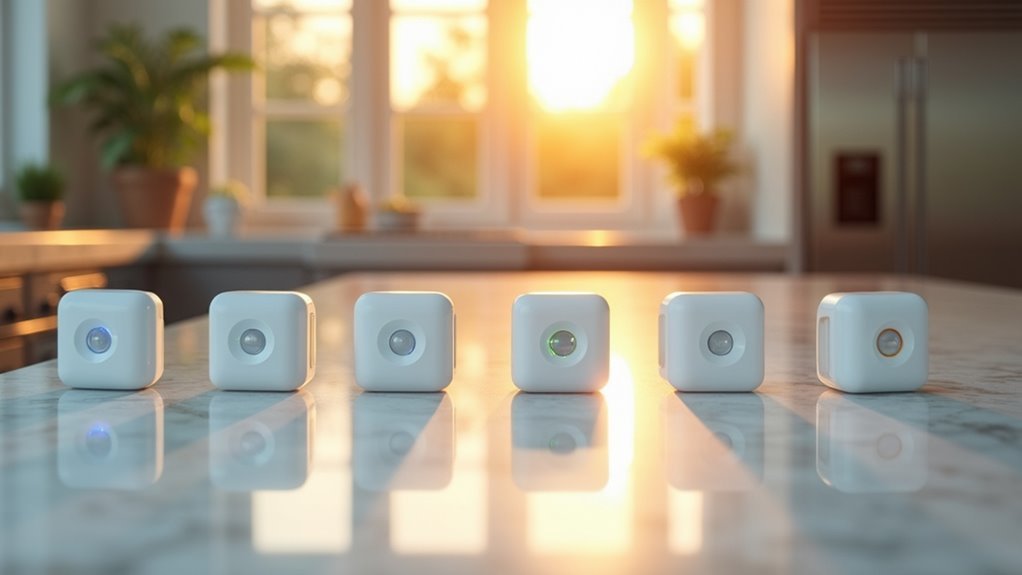
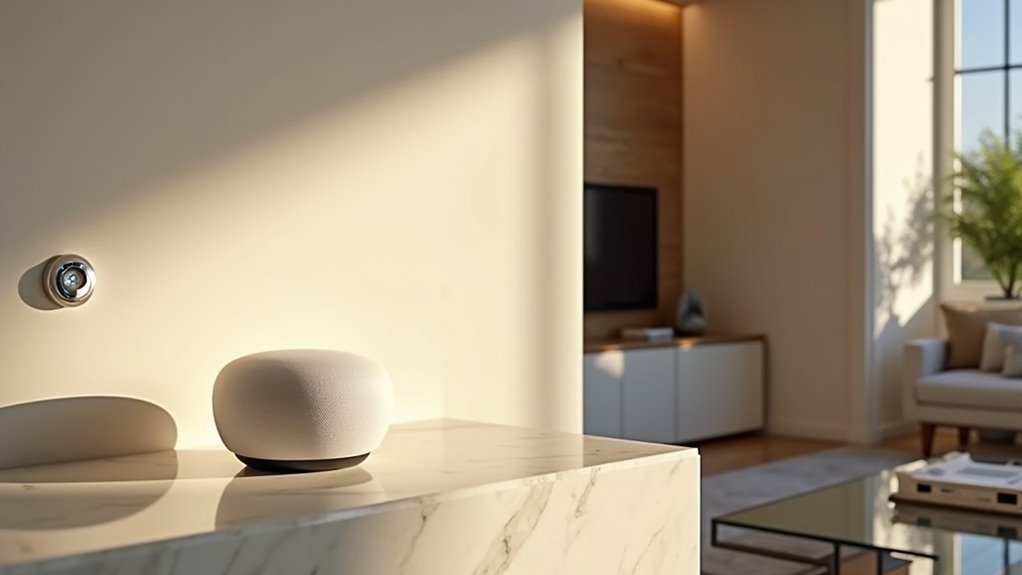
Leave a Reply